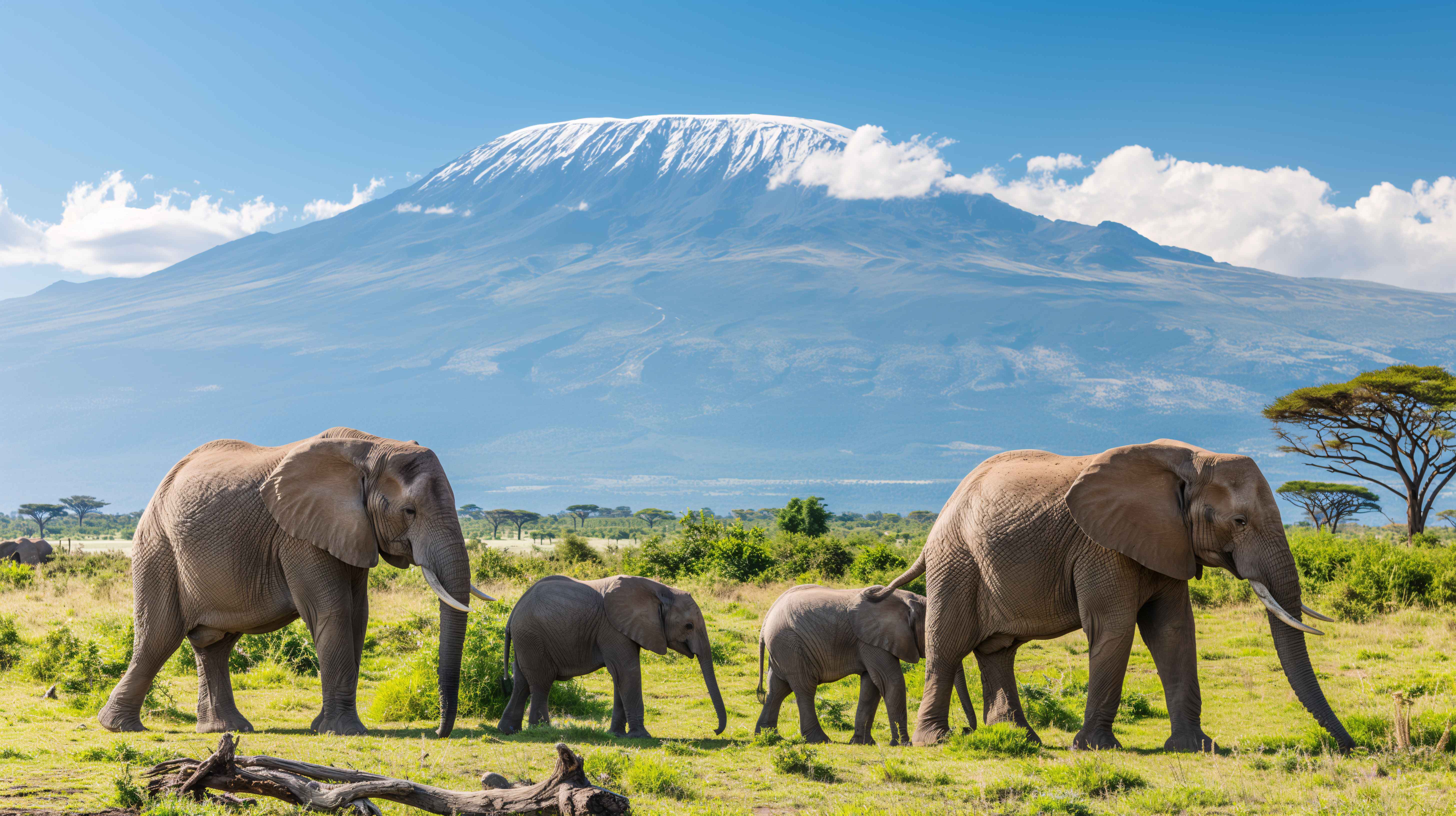Tourist Attractions in Amboseli National Park

Overview
Amboseli National Park is a treasure trove of natural beauty and wildlife, situated on the border of Kenya and Tanzania in Kajiado County. This majestic park covers an area of approximately 392 square kilometers and is one of the most scenic destinations in Kenya with the snow-capped Mount Kilimanjaro as its backdrop. This majestic mountain is the highest free-standing mountain in the world and provides a stunning backdrop for the park's wildlife and landscapes. The name "Amboseli" is derived from a local Masai word meaning "salty dust." This name reflects the park's history, as the Masai people used to graze their livestock in the area, often encountering dusty conditions during the dry season. Amboseli National Park was declared a UNESCO World Heritage Site in 1991 due to its unique ecological system. This recognition highlights the park's importance in preserving the region's natural beauty and biodiversity.
Elephants and Beyond
Amboseli National Park is renowned for its large herds of elephants, which can often be seen feeding on the park's lush vegetation or taking a dip in the swampy areas in the early morning and evening hours. Amboseli National Park is home to over 1,000 elephants, and many of them are known individually by researchers at the Amboseli Elephant Research Centre. In addition to these magnificent creatures, visitors can also spot a variety of other animals, including lions, cheetahs, giraffes, zebras, and a wide range of bird species. The park is home to over 600 bird species, including migratory birds that visit during the months of November to April. Some of the notable bird species found in Amboseli National Park include golden-winged sunbird, cranes, crowned hornbill, superb starling, hamerkops, rare shoebills, pelicans, kingfishers, and a variety of migratory birds that visit the park during the rainy season.
Habitat Diversity
One of the most striking features of Amboseli National Park is its diverse range of habitats: open plains, woodland, acacia, rocky thorn bush country, and swamps and marshlands. These diverse habitats support a wide range of wildlife, including large herds of elephants, lions, cheetahs, giraffes, zebras, and many more. Amboseli also hosts a dried-up lake bed, which was once a permanent lake with a depth of 40 meters that transforms into a shallow lake during the rainy season, attracting a variety of wading birds. The park's wetlands, fed by underground streams from Mount Kilimanjaro, provide a reliable source of water for the animals throughout the year.
A Photographer's Paradise
For photographers, Amboseli National Park offers endless opportunities to capture stunning images. The park's open landscapes provide excellent visibility, making it easy to spot and photograph animals in their natural habitat. The backdrop of Mount Kilimanjaro adds an extra layer of drama to every shot, creating a perfect contrast between the snow-capped peak and the dry, dusty plains. The park's diverse habitats also offer a range of photographic subjects, from the majestic elephants to the colorful birdlife and the stunning landscapes.
Accessibility and when to Visit Amboseli National Park
Amboseli National Park is easily accessible from Nairobi, with a drive time of around 4 hours covering 365 km southeast. Alternatively, fly from Nairobi's Wilson Airport (WIL) to Amboseli Airport (ASV) in just 41 minutes. Airlines like AirKenya Express, Safarilink, and World Ticket offer daily flights. The park can be visited year-round, but the best time for game viewing is during the dry season, from June to October. During this time, the grass is shorter, making it easier to spot animals, and they tend to stay closer to water sources. The wet season, from November to May, is a great time for bird watching and photography, as the park is lush and green, and the skies are clear of dust.
Amboseli National Park entry fees
Category Adult Child
Citizen(KSH) 850 215
Resident (KSH) 850 215
Non-Resident(USD) 60 35
Activities in Amboseli National Park
o Game Viewing: Game drives in open-top vehicles or private cars are the most popular activity in the park. Visitors can expect to see large herds of elephants, as well as other wildlife species, during the early morning and evening hours when animals are most active.
o Birding: Amboseli National Park is a prime destination for birdwatchers, with the best time to spot migratory birds being during the rainy season from May to December.
o Nature Photography: The park's stunning scenery, including the iconic Mount Kilimanjaro, provides ample opportunities for nature photography.
o Hot Air Balloon Safaris: Visitors can enjoy a unique aerial perspective of the park by taking a hot air balloon safari.
o Cultural Encounters: Visitors can interact with the local Maasai communities and learn about their traditional way of life.
Conclusion
Amboseli National Park is a must-visit destination for anyone interested in wildlife, scenic beauty, and adventure. Its unique location, diverse wildlife, and stunning landscapes make it a memorable experience for tourists. Whether you're a birdwatcher, a photographer, or simply a nature lover, Amboseli National Park offers a wealth of experiences that will leave you in awe of its natural beauty.
